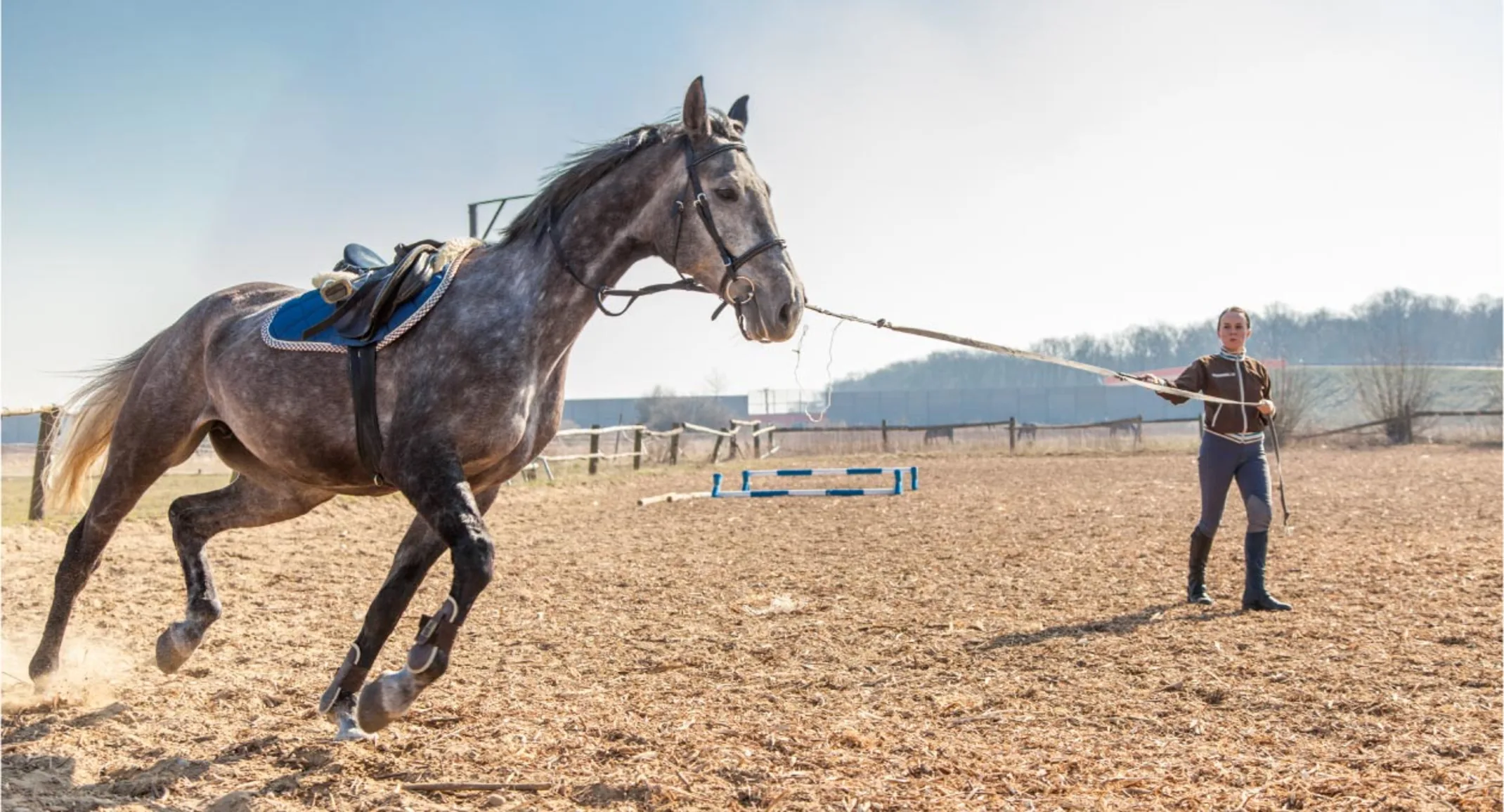Putting Your Horse Back to Work After a Layoff
General

Unless you have access to an indoor arena, you and your horses probably take a bit of a vacation from training during the winter. In preparation for the springtime, though, you need to get your horse back in shape so that you both can enjoy the warmer weather. How you bring your horse back from his time off can determine how quickly they're back in shape and how sound they stay during its training.
If your horse had access to turnout during the winter, it will obviously be fitter than a horse that had to be kept in a stall most of the time during the bad weather. A horse that has some baseline level of fitness will come back quicker from a break than a horse that was completely sedentary. But you do need to remember that the goal is not necessarily to bring your horse back into full work as quickly as possible.
There is a saying among human athletes and trainers, “train don’t strain.” If you ask a body, human or animal, to do more work than that to which it has been accustomed, injuries (strains) are likely to occur. By getting the horse slowly back into shape, you can maximize its fitness and soundness. Additionally, horses that are asked to work too hard too soon are at risk of developing serious problems, such as tying up (exertional rhabdomyolysis), bowed tendons, back soreness, and suspensory ligament injuries. By properly conditioning the horse’s muscles, tendons, and bones, you can help minimize these problems.
When conditioning a horse that has been off for a period of time, start slowly. If the horse has been completely sedentary, consider starting with ground work and hand-walking. These exercises can begin to increase the horse’s fitness without the extra stress of a rider on its back. You can then progress to ridden work. At first, be sure to spend plenty of time at the walk. Only when the horse can do 30 minutes of walking without seeming to be out of breath should you progress to the trot. Slowly increase the amount of trot work that is done, but remember to thoroughly warm up and cool down with sufficient walking. When the horse can comfortably trot for 15-20 minutes, you can progress to the canter. Make sure that the horse is able to do 30-45 minutes of flat work before going onto jumping. If you mainly trail ride, you can work some hills into your training regimen to increase your horse’s fitness.
If you notice anything “off” about your horse, either attitude-wise or soundness-wise, while getting it back in shape, consult with your veterinarian. It is better to find a small problem early than it is to let it progress to become a big problem. It may simply be that you need to take your conditioning program more slowly so that your horse can get reacquainted with work. Temporarily backing off on its work level now may mean you have a sounder, happier horse later.
Michelle Egli, DVM
Delmarva Equine Clinic
